

Teaching Vocabulary. Vocabulary is the knowledge of words and word meanings.
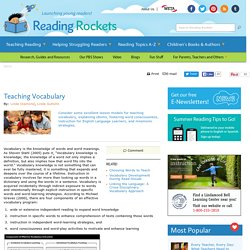
As Steven Stahl (2005) puts it, "Vocabulary knowledge is knowledge; the knowledge of a word not only implies a definition, but also implies how that word fits into the world. " Vocabulary knowledge is not something that can ever be fully mastered; it is something that expands and deepens over the course of a lifetime. Instruction in vocabulary involves far more than looking up words in a dictionary and using the words in a sentence. Vocabulary is acquired incidentally through indirect exposure to words and intentionally through explicit instruction in specific words and word-learning strategies.
According to Michael Graves (2000), there are four components of an effective vocabulary program: Components of vocabulary instruction The National Reading Panel (2000) concluded that there is no single research-based method for teaching vocabulary. 10 Dos & Don'ts For Teaching Vocabulary In Any Content Area. Creating Readers and Writers: Fast Finds: A Vocabulary Activity. My family and I love the line of Cranium games.
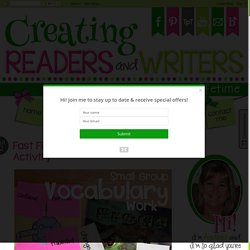
(Talk about honoring multiple intelligences! I think these game-makers have attended a conference or two. Or maybe they're just smart people who know how differently people think.) In one of their games, Cranium Cadoo, there is a category called "Fast Finds. " Each Fast Find card lists two things you have to find before the timer runs out. . • something cold • something fuzzy The kids love this category because they can get up and race around the house and the whole time they're racing around, the teacher-me thinks, "This is great vocabulary practice! " Playing off this idea, I started doing something similar during reading workshop and small group reading instruction.
Small Group Examples: In this "Day 2" guided reading session, I put four vocabulary words on each child's book prior to the rereading of the text. I also use this Fast Find activity to see if children understand text features and to facilitate the sharing of opinions. Diary of a Not So Wimpy Teacher: Teaching Meaningful Vocabulary Lessons. Every year I am shocked by my students' underdeveloped vocabulary.
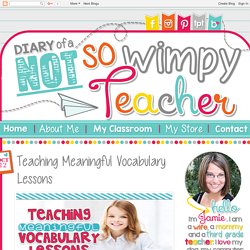
They struggle with reading comprehension because of their limited understanding of words. Their writing can be very drab because of their limited word choice. And when it comes time for standardized testing- they often struggle with even understanding what is being asked of them because of the tier two words that can be found in the questions. I have always known that I needed to make my vocabulary instruction more meaningful, but I struggled with how to teach it and when to squeeze it into an already packed schedule. Early in my teaching, I would assign the five words from the weekly anthology story. I did lots of research! On Mondays I introduce five new words for the week. I introduce words one of two different ways. I give the students a sentence with the word in the sentence.
Students record the definition and a sentence for each word in their vocabulary journal. This whole activity takes 5-10 minutes! Chart – Context Clues. Grow ELL Vocabulary Skills. This article is the first in a two-part series on supporting ELL literacy, sponsored by Middlebury Interactive Languages.
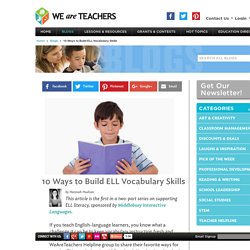
If you teach English-language learners, you know what a challenge it can be to keep vocabulary instruction fresh and engaging. That’s why we recently asked educators in our WeAreTeachers Helpline group to share their favorite ways for growing ELL vocabulary in middle school. Here’s what they had to say: Act it out: Shake up your usual vocabulary routine and get students out of their seats by playing a game of vocabulary charades.
Write the words that you want to practice on index cards, and invite teams to take turns choosing a card and acting out the word. Want more support for your English-language learners? Saddle up for Second Grade: Vocabulary. Have you heard of focus walls?
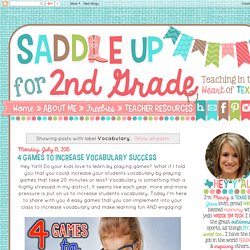
Do you have one in your classroom? Today's post is all about how to set up a focus wall in your classroom and how to incorporate it on a daily basis. Lets start with the basics... What is a focus wall? A focus wall is a bulletin board or tri-fold display that shows specific skills you are currently focusing on. Here is what the focus wall in my classroom looks like. E is for Explore!: Word Wheel.